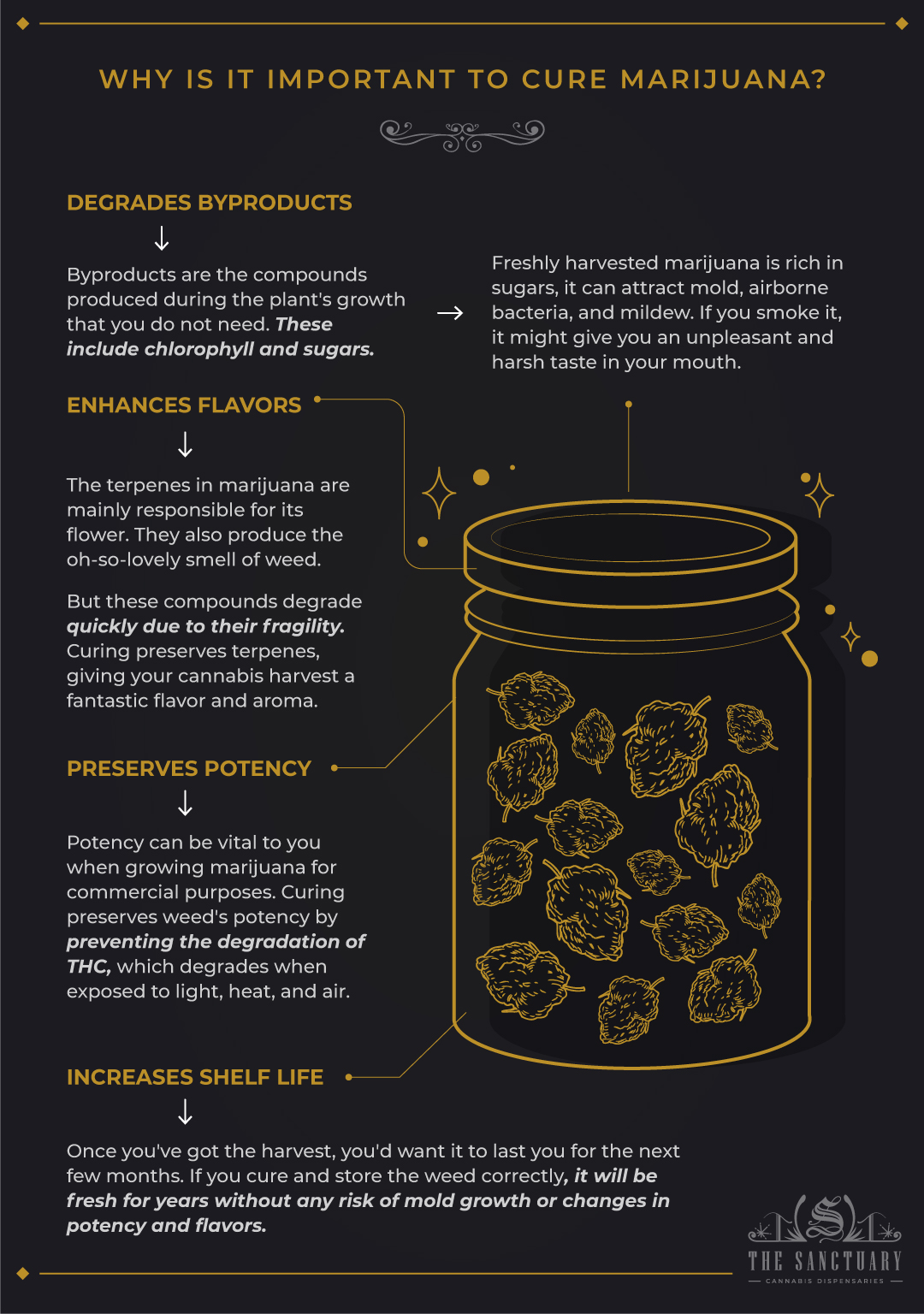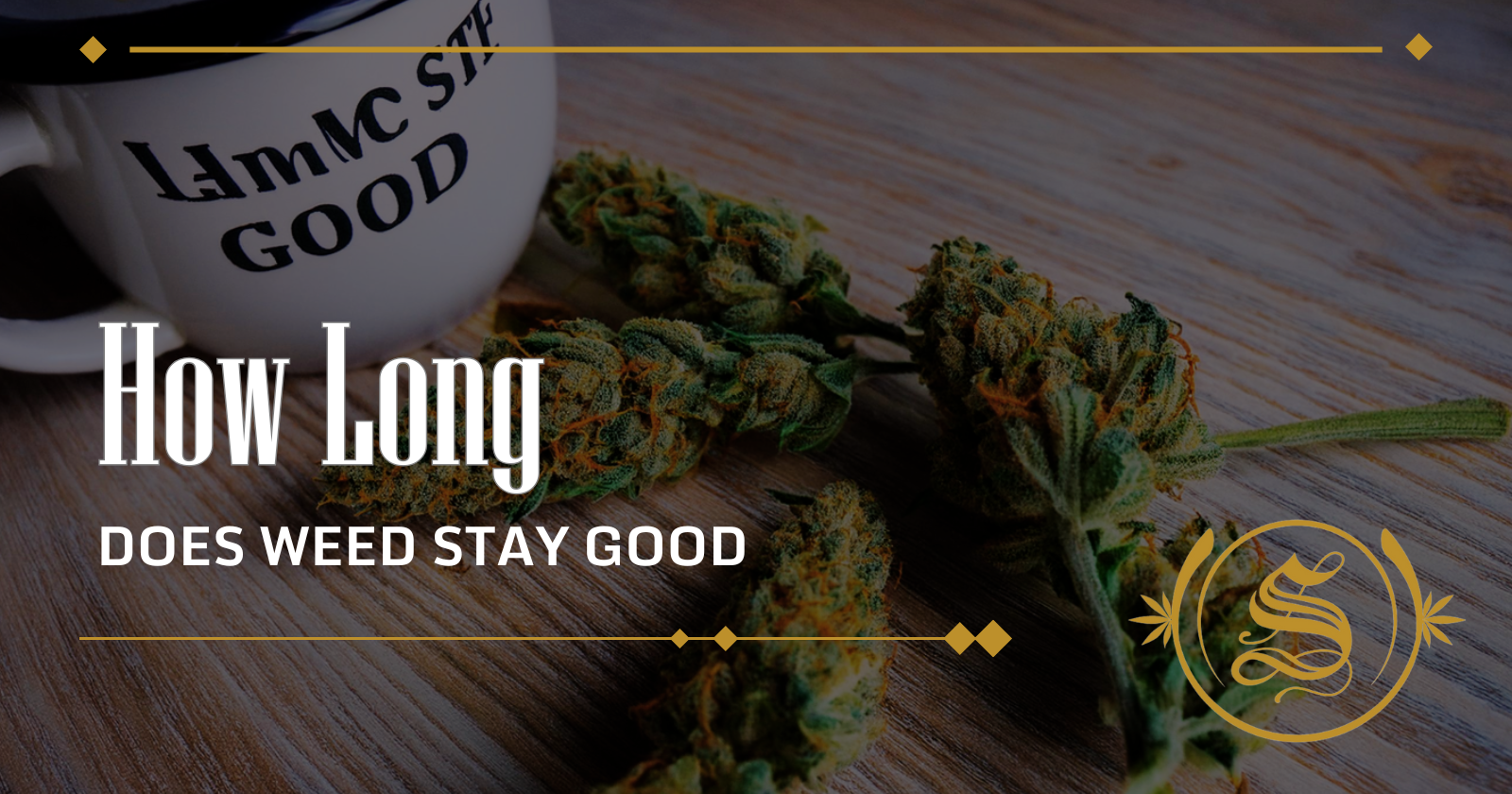Iftikhar Alam
Author
Reviewed by Cannabis Experts
Published on: June 14, 2023 | Updated on: September 11, 2024
After you’ve harvested your marijuana crop, it’s time to ‘cure’ it. But what does that mean?
Curing is the process of aging and drying marijuana to enhance its quality, potency, aroma, and flavor. The curing process removes moisture from the marijuana buds slowly, allowing the CBD and THC inside the plant to undergo chemical changes.
It also breaks down the chlorophyll molecules inside the plant, resulting in better taste and smoother smoke.
So, how do you cure marijuana? We discuss it in the guide below.
Why Is It Important to Cure Marijuana?

Whether you want your weed brownies to have better flavor or your crop to have a long shelf life, curing can help. Here are some reasons to cure cannabis.
Degrades Byproducts
Byproducts are the compounds produced during the plant’s growth that you do not need. These include chlorophyll and sugars.
Since freshly harvested marijuana is rich in sugars, it can attract mold, airborne bacteria, and mildew. If you smoke this weed, it might give you an unpleasant and harsh taste in your mouth.
Curing helps degrade these byproducts to minimize or eliminate these adverse effects. It also gives you a smooth smoking experience.
Enhances Flavors
The terpenes in marijuana are mainly responsible for its flower. They also produce the oh-so-lovely smell of weed.
But these compounds degrade quickly due to their fragility. Fortunately, curing preserves terpenes, giving your cannabis harvest a fantastic flavor and aroma.
Preserves Potency
Potency can be vital to you when growing marijuana for commercial purposes. Curing preserves weed’s potency by preventing the degradation of THC, which degrades when exposed to light, heat, and air.
Increases Shelf Life
Once you’ve got the harvest, you’d want it to last you for the next few months. If you cure and store the weed correctly, it will be fresh for years without any risk of mold growth or changes in potency and flavors.
How to Dry and Cure Marijuana?
Before you cure marijuana, it’s essential to dry it. To do this, hang the buds upside down using a wire or a string in a room with limited light where you can control humidity and temperature, such as a windowless attic or a basement.
Set the string off the ground and hang your cannabis branches on it using clothespins. The upside-down hanging will keep the plant’s internet juices flowing.
To ensure airflow in the area, put a desk fan on a table facing the hanging marijuana buds. Keep the fan at the lowest setting.
The temperature in the room should be 60–70 °F (16–21 °C) for optimal drying. Meanwhile, the humidity should be 50% to 60%. You can use a hygrometer to measure humidity levels.
If the room doesn’t have a humidity of around 50% naturally, use a humidifier or dehumidifier, depending on the room’s humidity, to adjust the overall humidity.
Cannabis buds dry in about two weeks. Around this time, the stems should not bend but snap when you exert pressure. Even if the stem bends a little without breaking, you should let it dry a bit longer.
Curing Cannabis With Airtight Containers
Once the plant is dry, you can start curing it. Here are some simple steps:
- Get Airtight Containers: The good old Mason jar is your best bet in this regard. But you can also use clear turkey bags since they don’t leak moisture. While there’s a strong case for using glass containers only, many growers use plastic containers too.
- Maintain Humidity: If the cannabis plant is dried correctly, it should be able to maintain a humidity of 60% to 70% in the container naturally. But you can still put a hygrometer inside to monitor the humidity. Some specialized containers also have built-in hygrometers for humidity monitoring.
- Fill the Containers: Fill up to three-quarters of the containers with cannabis buds. Do not fill them to the top, as it will obstruct airflow.
- Close the Containers: Put the airtight lid on the containers. Also, stick a piece of tape on each container and write the date on which you put the buds inside.
- Store the Containers: Put the cannabis containers in a dark room with temperatures of 75–80 °F (24–27 °C) or below. The best place for this step is your basement, as it stays dark and cool.
- Turn the Buds: Every day, turn the buds to ensure a single side does not stay in contact with the container’s surface for too long. Take the buds out of the container and move the buds around in your hands. For bags, rotate the buds to expose them to a new surface.
How Long Does It Take to Cure Marijuana?
At the end of the first week, open the cannabis container and smell it. You can also squeeze some buds between your fingers to release the aroma.
If the smell is moist and sweet, the plant has cured. If not, put the buds back into the container and let them cure for a little longer.
Curing doesn’t usually take longer than three weeks. But you can cure weed for six months too. Many growers keep the cannabis in the curing containers and only take out the buds they want to consume.
In this way, the curing process can be extended for months or even years. Alternatively, you can refrigerate the cannabis to preserve the potency of the cannabinoids.
How Does a Cryo Cure Help in Curing Marijuana?
If you grow marijuana for personal use, airtight containers will do the job just fine. But if you’re a commercial grower and need to cure large amounts of weed at a time, invest in a Cryo Cure.
It’s a curing machine that can dry and cure your cannabis harvest quickly. Do note that it can be pretty expensive, so only opt for this if you plan on growing cannabis in large quantities.
Conclusion
Drying and curing marijuana can help retain its aroma, flavor, and potency. The good news is you can cure marijuana in your basement in under three weeks. All you have to do is keep the dried buds in airtight containers and have some patience.
The content provided on this blog is for informational purposes only and does not constitute medical, legal, or professional advice. Cannabis use is subject to local laws and regulations, which vary widely by jurisdiction. Always consult with a healthcare professional before starting any new treatment or altering an existing treatment regimen. The authors and publishers of this blog are not responsible for any actions taken based on the information provided herein. Use cannabis responsibly and in accordance with applicable laws. This blog is intended for adults aged 21 and over. The Sanctuary Dispensaries D186, D187.








